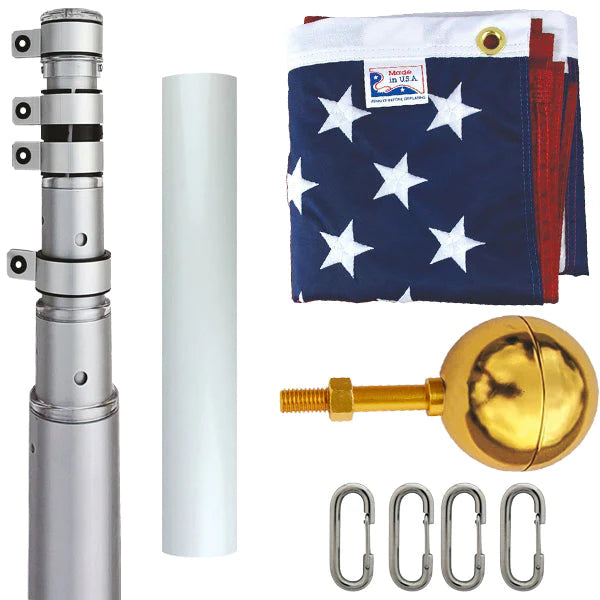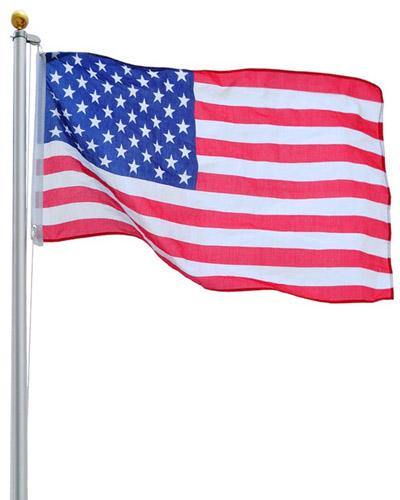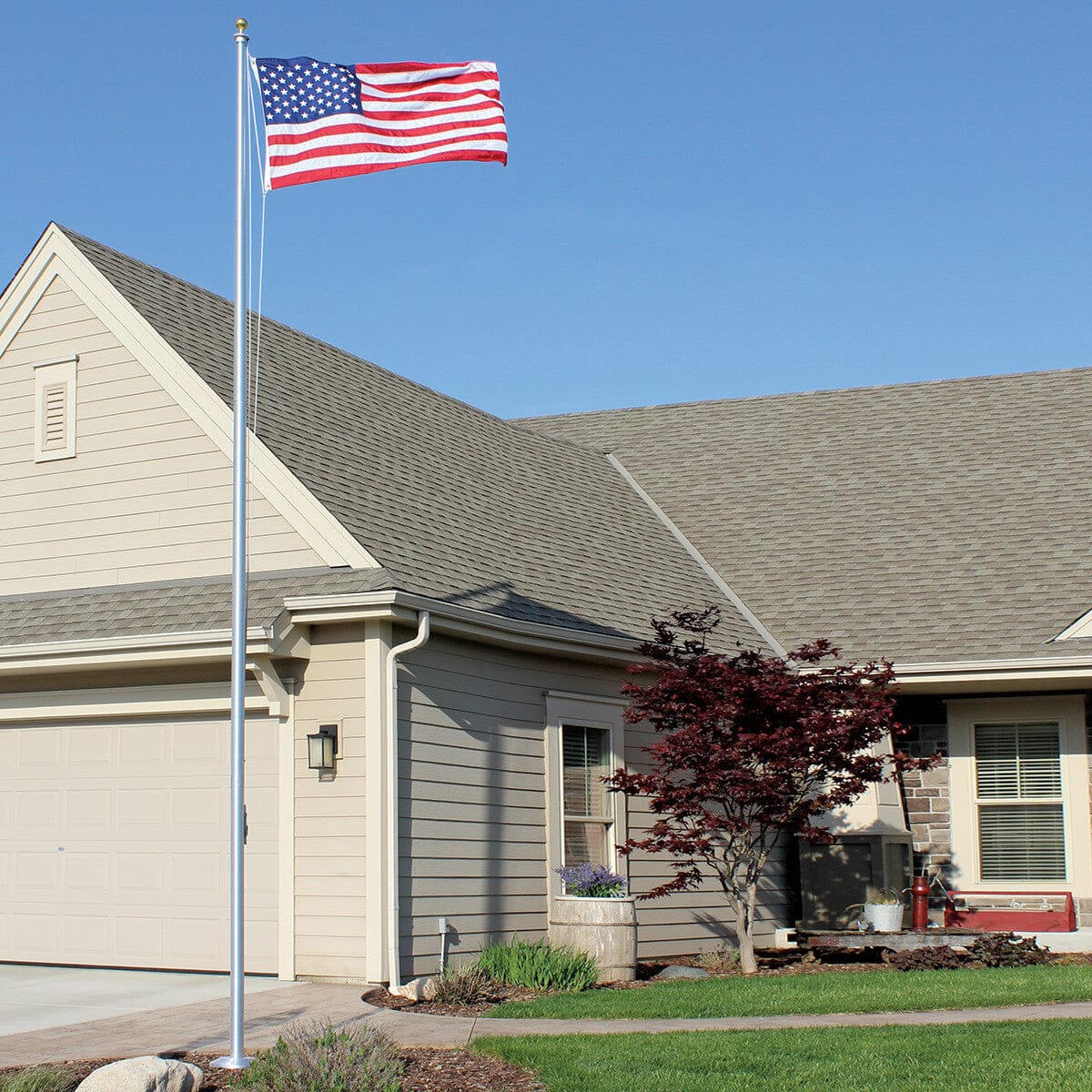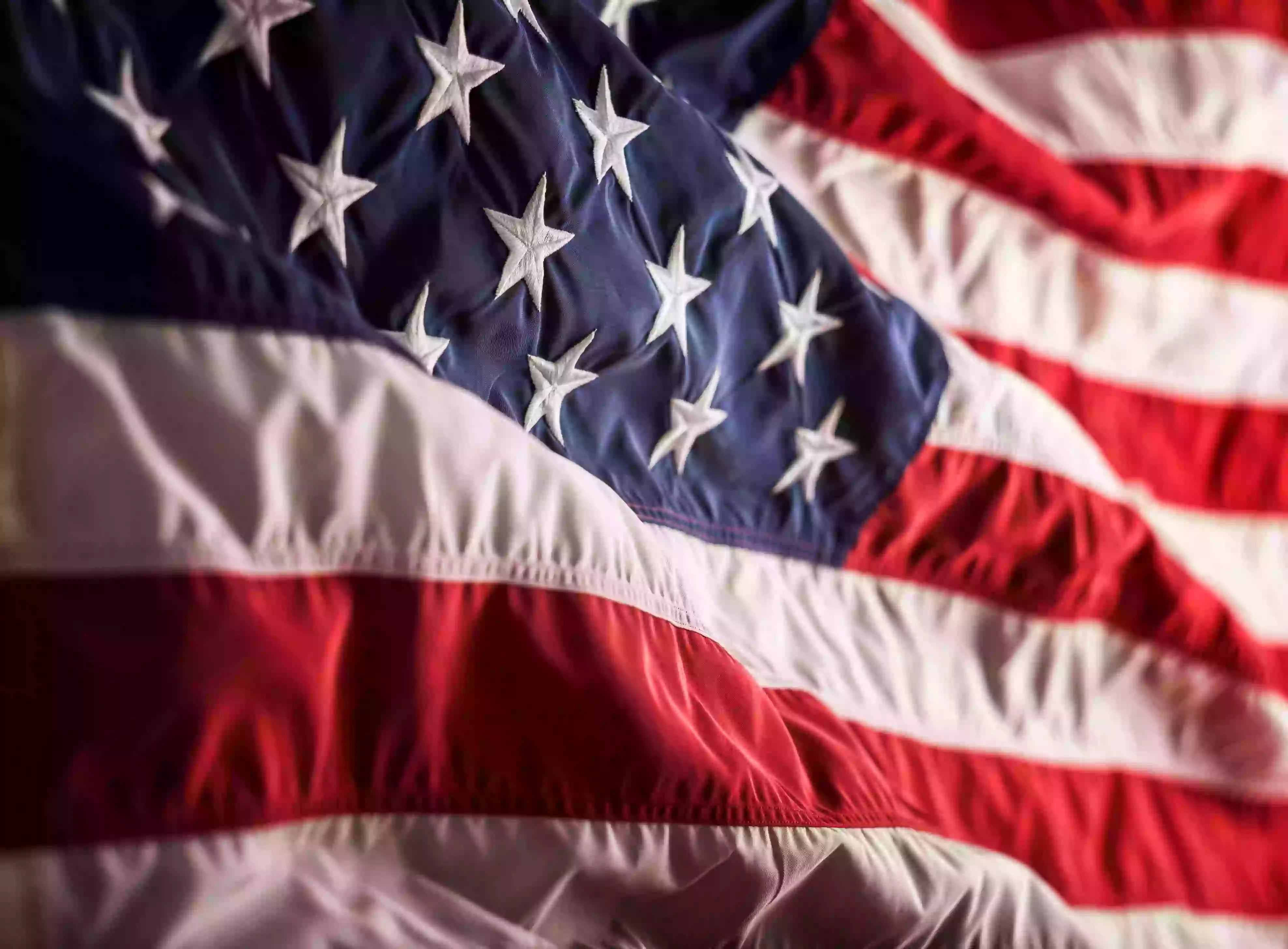Flags are powerful symbols that convey a wide range of meanings, ranging from support to pride. However, how a person chooses to hang a flag can also have its share of implications. This is especially true when it comes to displaying the American flag. Read on to learn about the different types of flag displays and their meanings so you can gain a greater understanding of their intended messages.
The Half-Staff Flag Display
One of the most widely recognized flag displays is the half-staff display, also known as “half-mast.” This somber positioning of the flag—hoisted only halfway up the flagpole—serves as a powerful symbol of mourning and respect. People usually follow this practice to honor the death of esteemed individuals such as national leaders, public servants, or notable figures who have made significant contributions to society.
For example, the U.S. Flag Code stipulates that the U.S. president can mandate that the flag be hung in this position when a member of the government or other officials pass away. State governors also have this authority when officials, soldiers, or first responders die as well.
In addition, it is customary to have the American flag in this position on the morning of Memorial Day. However, you should move it to the very top of the flagpole at noon. This poignant display invites solemn reflection, reminding us of our shared losses and the enduring legacy of those we mourn.
An Upside-Down Flag Display
Another universally understood type of flag display is when a person hangs it upside down. The U.S. Flag Code forbids creating this sort of display with the American flag, except under extreme circumstances. If a person is in danger, hanging a U.S. flag upside down can be an effective way to indicate to others that they need assistance. However, it should be only used in this circumstance, or you may unintentionally indicate to others that you are in distress.
A Vertical U.S. Flag Display
If a person cannot display their American flag from a flagpole, they have the option of displaying it vertically. Although there is not a specific message that you would express by hanging it in this direction, there are still rules you should follow to ensure you stay in accordance with the U.S. Flag Code.
When hanging it, make sure that the union is at the top and on your left. In addition, ensure that the flag is in a position where it cannot touch the ground. Vertical flag displays are commonly seen during parades, on buildings, or as banners hung from a window or entrance. This form of display upholds the dignity of the flag and emphasizes its revered status as a symbol of national unity and pride.
An International Flags Display
When people see a display of several international flags hanging from separate flagpoles, it usually indicates a representation of global unity and diversity. However, how you hang each flag on their separate staff can affect the delivery of this message.
Every individual flag should be hung at the very same level, and all of them should be equal in size. Otherwise, it would send the incorrect message that one does not deserve the same respect as the others. When it comes to hanging the American flag in this display, the U.S. Flag Code mandates that you must put the flag on the first pole on the viewer’s left, followed by the other nations in alphabetical order.
A Cross-Staff Flag Display
Another example of a time when you may hang a flag from a wall is in a cross-staff display, which features two flags on separate poles, with one staff crossed over the other. You might see this during formal events and ceremonies where showcasing multiple symbols of significance is essential. This method of display can underscore specific relationships, alliances, or cooperative efforts, serving as a visual reminder of the unity and support among different entities.
When the American flag is in this display, place the flag to your left with its staff on top of the other flag’s pole. This will allow you to be in line with the U.S. Flag Code’s regulations.
A Display Featuring the U.S. Flag with Other Local Flags
You may also encounter a display featuring the American flag with other flags, such as those for local organizations, cities, or states. However, when you hang the U.S. flag with others on a pole, it is essential that it has the highest position of prominence.
If you see it in a display where all the flags are on separate staffs, the U.S. flag should be in the center and stand taller than the others. This practice symbolizes the unity and supremacy of the nation over its constituent parts. This display is commonly seen during events involving multiple governmental levels, such as official ceremonies and public gatherings.
However, there is one situation where you may see the U.S. flag below another one. If you were aboard a naval vessel and attending a church service, it is in accordance with the U.S. Flag Code for the American flag to hang underneath the church’s pennant.
A Procession Display
One last type of display you might see is a procession of flags, which is a visually captivating way to showcase national and organizational pride during parades, ceremonial events, or public demonstrations. Participants will usually carry the flags on staffs as they march in a coordinated manner, accompanied by military or civic bands.
Each flag in the procession holds significant meaning, representing various entities such as countries, states, or organizations. When you march with a U.S. flag, make sure you are following the Code by holding it on the flag’s right or positioning it at the very front or the middle of your procession.
Now that you understand the diverse meanings and protocols behind these displays, you can better observe and respect these traditions. If you want to create your own flag display to show your patriotism, Liberty Flagpoles can help. In addition to selling flagpoles, we offer American flags for sale that are made in the USA and come in multiple sizes.








